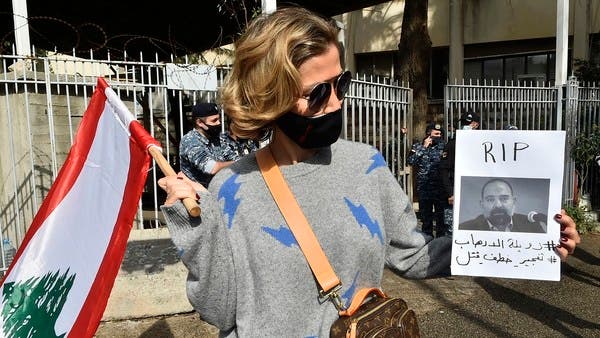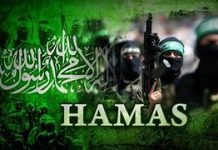Lokman Slim and the anatomy of Hezbollah’s brutal history of assassination
Nadim Shehadi/Al Arabiya/Friday 05 February 2021
نديم شحادة/العربية: لقمان سليم وتشريح تاريخ حزب الله الوحشي للاغتيالات
Lokman Slim was found dead, shot four times in the head, and once in the back after disappearing from his family in a brutal assassination attempt aimed at shutting down a dissenting voice of Hezbollah, an Iran-backed terrorist group with a dark history.
Assassinations in Lebanon are like a recurring nightmare. First the news through a dense fog of rumors, followed by denial and disbelief, a stubborn clinging to every hope that it can’t be true. A mixture of anger, despair, sadness, emptiness and then the realization of the futility of it all.
There is also desperate attempt to find a reason, as though a rationale and a meaning would make it easier to accept.
Conspiracy theories, speculations about motive, timing and purpose clutter our screens. No matter how many try to explain, justify or deny; we’ve been through this too often. The pattern is as well established and as unmistakably recognizable as mob killings in movies about the Mafia in the US.
Lokman Slim’s home as well as the cultural institutions he created are situated in the heart of Beirut’s southern suburbs. The family name is associated with the area of Haret Hreik as are a few other Maronite and Shia families who are its original inhabitants.
They formed a tightly knit diverse community with a distinct culture and cuisine who have been neighbors for centuries. This is before it became densely populated, with the influx of displaced Shia from the south of Lebanon fleeing Israeli attacks and occupation.
This is also the suburb of Beirut that was almost totally destroyed by the Israeli air force in the summer war of 2006 and is almost totally under Hezbollah control.
The historically marginalized Shia community of Lebanon has always been politically and intellectually diverse.
Prominent early founders of the Lebanese communist party coexisted with a broad spectrum of Islamists and secular nationalists of all shades.
Many were also active in Palestinian organizations before and during the Lebanese civil war when an equally diverse group of Iranian exiles took refuge in the country and mixed with revolutionaries of all sorts.
The Italian Red Brigade, the Japanese Red Army, the IRA, Sandinistas, Bader Meinhof Gang, Vietnamese as well as the Dhofar rebels of Oman all had a presence in Lebanon, to support the Palestinian revolution.
These were the Foreign Fighters of the Lebanese civil war who were based in Palestinian refugee camps adjacent to the southern suburbs.
Hezbollah was born in that environment and achieved tight control first and foremost through internal battles within their own Shia community. In the case of Lokman Slim, all fingers point at another carefully calculated assassination delivering a message, a warning to dissenters.
The same methods of achieving hegemony through assassinations happened in Iran itself and in Iraq and Yemen where Hezbollah is active along with other proxies of Iran’s Islamic Revolutionary Guards Corps (IRGC).
On the August 18 last year, the Special Tribunal for Lebanon issued a judgement linking members of Hezbollah to the assassination of former Prime Minister Rafik Hariri and members of Hezbollah. This was part of a continuous series of assassinations in Lebanon over a 10 year period between 2004 and 2014.
Less known are earlier assassinations targeting prominent Shia personalities in the late 1980s. Communists like Hussein Mroue and Hassan Hamdan, the latter known as Mahdi Amel, had a significant international following.
There was also the assassination of rival Shia leaders from the Amal movement like Daoud Daoud, Mahmoud Faqih and Hassan Sbayti. This was in sync with almost three years of infighting in 1988-1990 in the War of Brothers between Hezbollah and Amal whose leader Nabih Berri called Hezbollah “Dracula” because the organization thrives on spilt blood.
Prominent critics like Lokman Slim, from within the Shia community can be seen as far more dangerous than an external enemy to movements like Hezbollah.
For some time, they were dismissed as “Shia of the Embassy” but they disrupt the group’s sectarian narrative that it is there to protect the community from an Israeli threat and provide support and services where the Lebanese state has failed. The agenda of perpetual war and membership of the Axis of Resistance which sent many Shia young men to fight along the Assad regime also undermined that narrative.
A military threat from Israel strengthens Hezbollah, and gives it legitimacy as resistance against the Israeli occupation and protector against aggression.
Hezbollah emerged much stronger from the 2006 war with Israel, that war confirmed its narrative and empowered it well beyond its narrow constituency.
The Lebanese army cannot fight Hezbollah, nor can it be defeated in a civil war which will also reinforce sectarian tensions with each community seeking protection from its own sectarian militias.
Pressure increased on Hezbollah when the protests in Lebanon gradually focused more on its role and identifying it and its allies as the core of “the regime”. The protests started in October 2019 by targeting the whole political and financial establishment blaming them for the economic collapse.
Failure of the state, combined with corruption and negligence, were also the cause behind the enormous blast in the port of Beirut on August 4 that destroyed a large part of the city.
For the first time there were demonstrations in South Lebanon and the Bekaa valley in Hezbollah’s heartland, and recently the “regime,” which is the target of the protests, has been more narrowly identified with Hezbollah and its allies.
This is at the same time that there are also protests in Iran itself against the hegemony of the IRGC and in Iraq, largely by Shia, against their own versions of Hezbollah and other Iranian sponsored terrorist groups.
Hezbollah’s Achille’s heel and soft underbelly is dissenters like Lokman Slim from within the Shia community which can spread and undermine its control over the country and Iran’s agenda in the region.




















